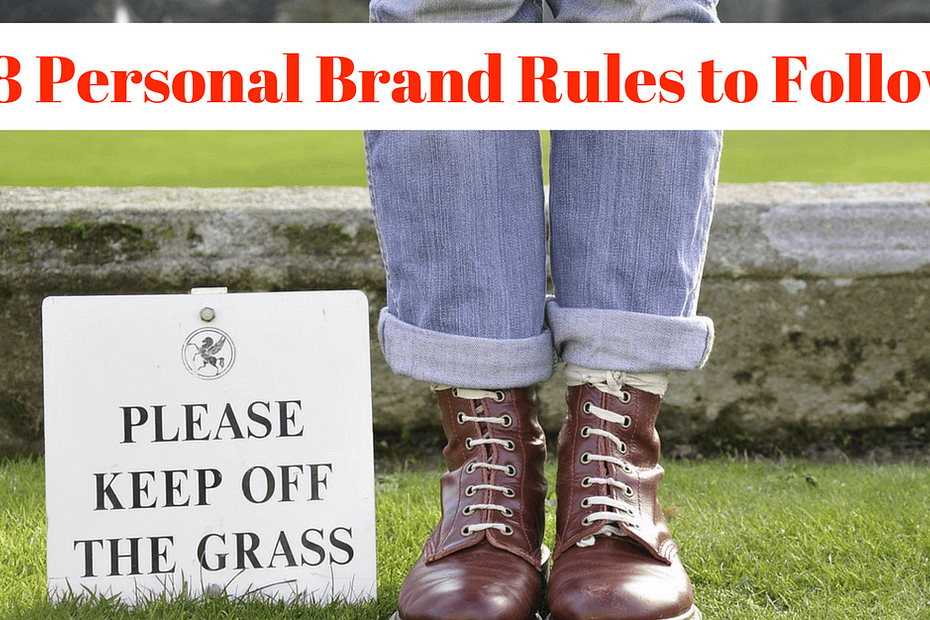At age 5, on my first day at school. the headmaster stood up in assembly and proceeded to reel off a number of rules to follow. One of them was not to walk down the grass bank. I wondered why. He never explained. So at the first break, I promptly went out on the school field and started to walk down the grass bank. A teacher saw me do this and promptly marched me off to wait outside the headmaster’s office.
I was let off with a caution.
Some rules are at the core and very foundation of cultures and nations. Some are in place for safety. Yet others we look at and wonder why.
[tweet_box design=”default” float=”none”]When it comes to your personal brand there may not be set rules to follow, apart from perhaps some common sense.[/tweet_box]
Guidelines might be a better description than rules.
I was going back through some past notes and came across a marketing report from Brandchannel.com that provided some research insights from 10 years ago. The report found that whilst the state of brands was generally good there was certainly room for improvement and a number of reasons why this was. When I originally read this I found the report findings could be related to the management of personal brands.
10 years later I feel it still applies and you might find them useful as some ‘rules’ in 2017 for your personal brand.
1. While the impact of brands is clear, most major industries remain non-branders, not proactively supporting or managing their brands.
The same can be said about personal brands.
[tweet_box design=”default” float=”none”]Most people in most industries are not doing anything to support or manage their personal brands, even though they all have one. [/tweet_box]
2. Many brands have rebranded recently, yet being thorough in rebranding is much more important than being frequent. Many seem to believe that tweaking one or two aspects of their external personal brand is going to be enough to be different and noticed. But being more diligent in the early foundation work will result in a much stronger and authentic personal brand.
3. Strict adherence to brand standards creates brands with customer impact, but few companies are able to secure consistent compliance.
People are respected more when they are able to identify what is on brand for them or off brand. Better for your personal brand to be turning away from an off brand opportunity than compromising your brand standards or diluting your message.
4. Centrally managed brands are no more influential with customers than decentralized ones.
All employees do not need to be the ‘same’. Allowing them to be personal brands within a brand is much more powerful and effective for the company and the engagement of individual.
5. Brands that receive adequate financial support are more influential in the customer decision process.
[tweet_box design=”default” float=”none”]Don’t skimp on card stock for your business cards or sign your next contract with a 30c pen, unless that’s part of your personal brand[/tweet_box]
6. Brand budgets are not expected to grow.
Truthfully though I find most people are not even investing anything in their personal brand development. You should be spending on getting your personal brand credible and visible, small investments now will reap bigger rewards both financially and spiritually.
7. Metrics and brand research are generally under leveraged.
Two of the most important early steps in defining your personal brand are to measure it now and then look at the improvements in 6 and 12 months. Also seek the input of others, what are their perceptions of your brand?
8. Brand practitioners believe Consistency is the most important aspect of successful branding followed by Understanding the Customer/Target, Messaging/Communication Effectiveness.
I could not have said it better myself.

